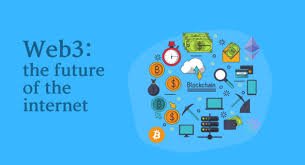The internet has evolved drastically since its inception, and we are now standing at the threshold of another groundbreaking shift—Web3. You’ve probably heard about Web1, the static web of the 90s, and Web2, which brought interactive platforms, social media, and cloud computing. Now, let’s dive into the world of Web3, often dubbed the "Decentralized Web."
What is Web3?
Web3 represents the next phase of the internet’s evolution, built on blockchain technology, decentralization, and user empowerment. In Web2, the platforms and services we use—like Facebook, Google, or YouTube—are owned by corporations. They control our data and profit from it. Web3 flips this model by enabling decentralized applications (dApps), where users have more control over their own data, digital assets, and online identity.
The core idea of Web3 is to democratize the internet. It moves away from centralized systems towards a system where the community governs and maintains the web.
Key Features of Web3
Decentralization
At the heart of Web3 is blockchain technology. Instead of relying on centralized servers controlled by a few entities, Web3 uses a decentralized network of computers (also known as nodes) to store data. This ensures that no single entity can control or manipulate the data.Blockchain Technology
Blockchain is the backbone of Web3. This technology allows for secure, transparent, and immutable transactions. Every action, from sending cryptocurrencies to executing smart contracts, is recorded on a distributed ledger, which cannot be altered without consensus from the network.Ownership of Data
In Web3, users retain ownership of their data. Unlike in Web2, where tech giants store and exploit our personal information, Web3 enables self-sovereign identity. Users can control what data they share and with whom, and even profit from sharing their data if they choose to.Smart Contracts
These are self-executing contracts with the terms of the agreement written directly into code. Smart contracts remove the need for intermediaries like banks or legal institutions, as they automatically enforce the rules and actions once certain conditions are met.Digital Assets
Web3 allows users to create, own, and trade digital assets like cryptocurrencies and Non-Fungible Tokens (NFTs). This has opened up new avenues for artists, creators, and innovators to monetize their work in ways that were not possible in the Web2 ecosystem.
Why Web3 Matters
User Empowerment: Web3 gives users more power over their data and online interactions. Users are no longer mere participants in a platform owned by someone else—they are stakeholders in decentralized networks.
Financial Inclusion: Through decentralized finance (DeFi), Web3 enables global financial services without the need for banks. Anyone with an internet connection can access financial services such as lending, borrowing, and investing without the need for a traditional bank account.
Transparency and Trust: The decentralized nature of blockchain ensures that all transactions are public and cannot be tampered with. This increases trust among users as the system is inherently transparent.
Challenges Ahead
While Web3 promises a lot, it is still in its early stages. Some of the challenges include:
Scalability: Current blockchain networks struggle with scaling to accommodate millions of users.
User Experience: The decentralized ecosystem is not as user-friendly as Web2 yet. For Web3 to go mainstream, more intuitive and accessible interfaces are needed.
Regulation: The decentralized nature of Web3 may face hurdles in terms of regulation and governance.
Conclusion
Web3 is poised to redefine the internet as we know it, shifting control from corporations to users. It’s not just a technological revolution but a philosophical one, emphasizing decentralization, transparency, and individual empowerment. As the technology matures, Web3 could lead to a more equitable and open internet, where people have the power to decide how they interact, transact, and collaborate online.
The future of the web is decentralized, and Web3 is the key to unlocking this potential.
Are you excited about Web3? Let me know your thoughts in the comments below!
